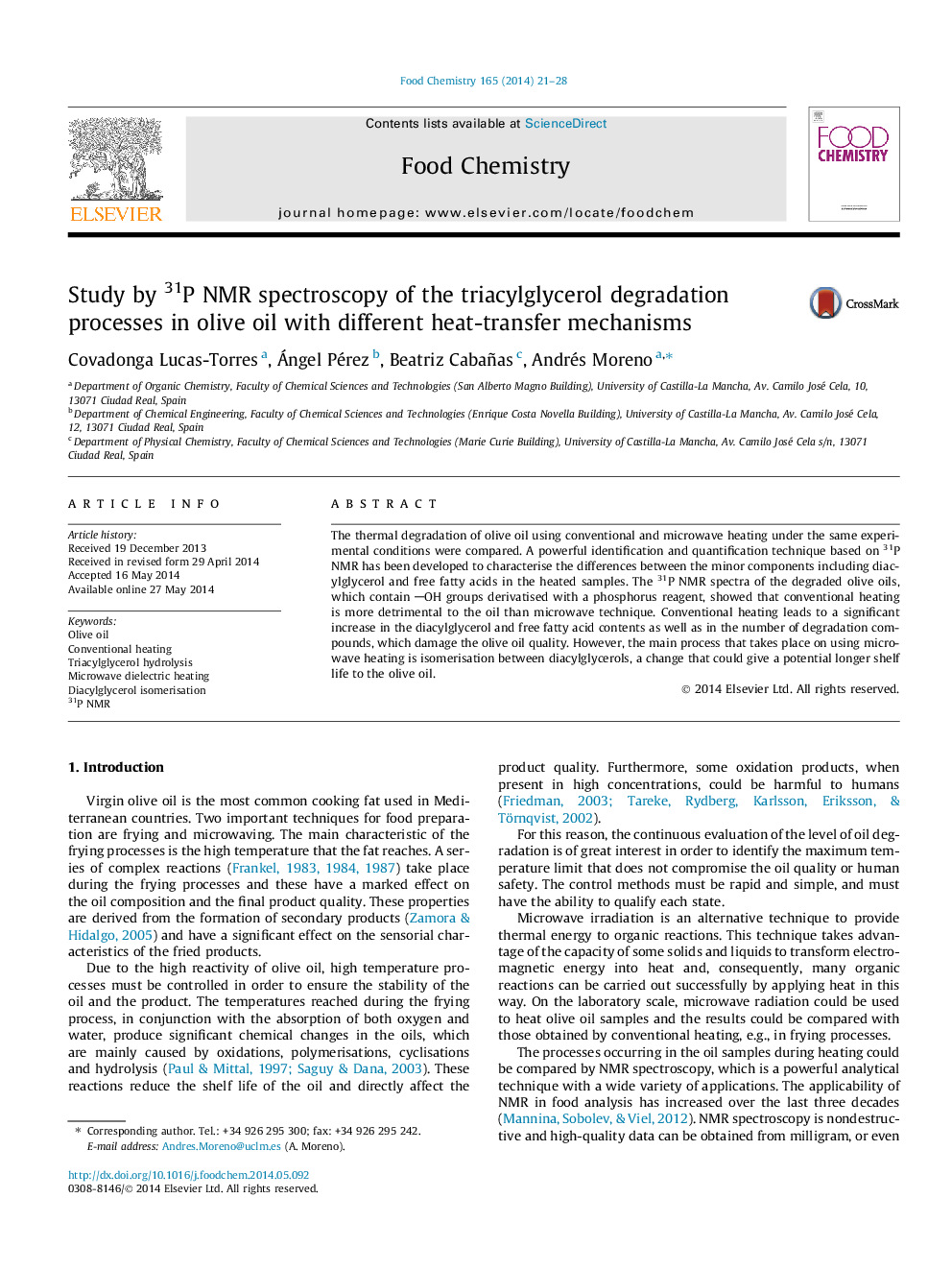| Article ID | Journal | Published Year | Pages | File Type |
|---|---|---|---|---|
| 7595722 | Food Chemistry | 2014 | 8 Pages |
Abstract
The thermal degradation of olive oil using conventional and microwave heating under the same experimental conditions were compared. A powerful identification and quantification technique based on 31P NMR has been developed to characterise the differences between the minor components including diacylglycerol and free fatty acids in the heated samples. The 31P NMR spectra of the degraded olive oils, which contain OH groups derivatised with a phosphorus reagent, showed that conventional heating is more detrimental to the oil than microwave technique. Conventional heating leads to a significant increase in the diacylglycerol and free fatty acid contents as well as in the number of degradation compounds, which damage the olive oil quality. However, the main process that takes place on using microwave heating is isomerisation between diacylglycerols, a change that could give a potential longer shelf life to the olive oil.
Related Topics
Physical Sciences and Engineering
Chemistry
Analytical Chemistry
Authors
Covadonga Lucas-Torres, Ángel Pérez, Beatriz Cabañas, Andrés Moreno,
